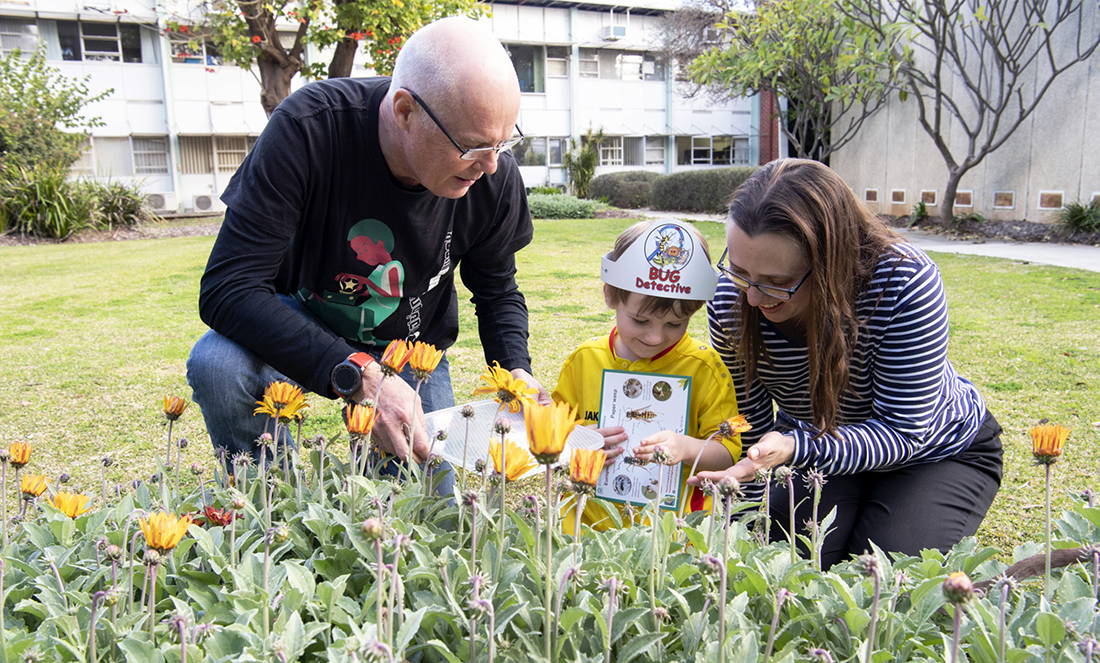For a week now, my family has been snooping under rocks, sneaking around the garden and peeking into shadowy corners. We’ve been searching for insects to photograph and catalogue as part of the citizen science project Mini Beasts in My City.
My kids have loved it. Their highlight is undeniably the hunt. And my highlight is their eager cries of “Over here!” and “Look at this!”
Then there’s the excitement of snapping photos of our finds. It’s part art, part luck. And for my kids, it’s a heady combination of that rare chance to get their hands on my phone and the high-pressure thrill of photographing a live, six-legged subject—potentially on the move.
Real live entomologists
Then there’s the payoff: we use the free MyPestGuide app to send in our report and receive a personalised reply from an actual scientist. An entomologist, to be exact.
“We have four entomologists responding within the WA Museum, four at the Department of Primary Industry and Regional Development and two at Murdoch University,” says Simon Carroll, Head of Science at the WA Museum. “Each has their different speciality. One’s an arachnologist, one’s focus is smaller insects another’s is ants.”
Given the range of mini beasts we’ve spotted, we may have heard from all of these experts.
The reports identify your find, including cool facts about anything from its distribution and diet to its Latin and/or Noongar name.
Preserving and appreciating biodiversity
Simon says the project aims to encourage more families to engage with the natural world.
“Not everything is a pest, and not everything has to be swatted,” he says. “Insects perform really vital roles in the ecosystem. Sometimes they’re predators, sometimes they’re food themselves and others are useful as pollinators.”

Sometimes they’re pretty fast, so if you need your bug to pose for the photo, Simon has some tips.
“Get a plastic container with straight, upright sides and scoop the insect into that. Then you can photograph the insect in the corner of it with your little lens,” he says.
If you need to immobilise a bug, it’s important to release them later. “You may be able to lay some clear plastic over the top for a moment, take the photograph through it then let it go,” says Simon.
“A healthy biodiversity is part of a healthy city, and humans are part of that biodiversity,” says Simon. “We’re part of this overall ecosystem, and our wellbeing depends on a healthy biodiversity. Looking after your biodiversity helps look after human health.”
The project ran for National Science Week, but the app is still available and there are talks of extending the program into October and November. So keep your bug catchers at the ready.










